Raccoons are clever, adaptable, and resourceful animals that often target gardens and farms. Known for their dexterous paws and problem-solving abilities, raccoons can quickly devour fruits, vegetables, and even damage garden infrastructure while searching for food. While they are fascinating creatures, raccoons can become serious garden pests, particularly in late summer and early fall when crops are ripe.
This guide explores practical, humane methods to stop raccoons from eating your crops, protect your garden, and maintain a balanced outdoor ecosystem.
Understanding Raccoon Behavior
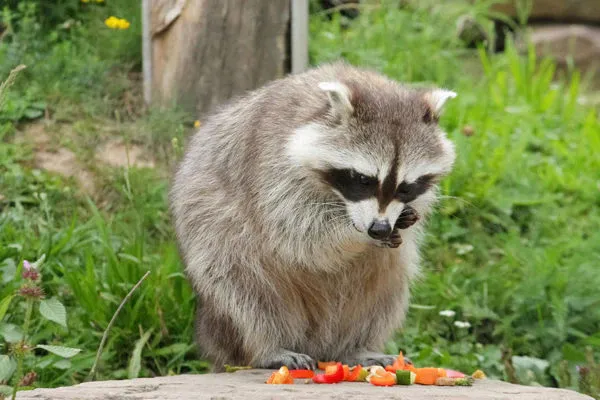
Effective raccoon management begins with understanding their habits:
- Nocturnal feeders: Raccoons are mostly active at night, reducing visibility of damage during the day.
- Food-motivated: They seek high-calorie foods such as corn, tomatoes, berries, and melons.
- Agile and clever: Raccoons can climb fences, open latches, and navigate obstacles to access food.
- Opportunistic: They take advantage of easily accessible food sources, including compost, pet food, and unprotected crops.
Knowing these behaviors helps gardeners implement targeted strategies that reduce crop loss without harming the animals.
Method 1: Secure Fencing
Physical barriers are the most effective way to keep raccoons out of gardens.
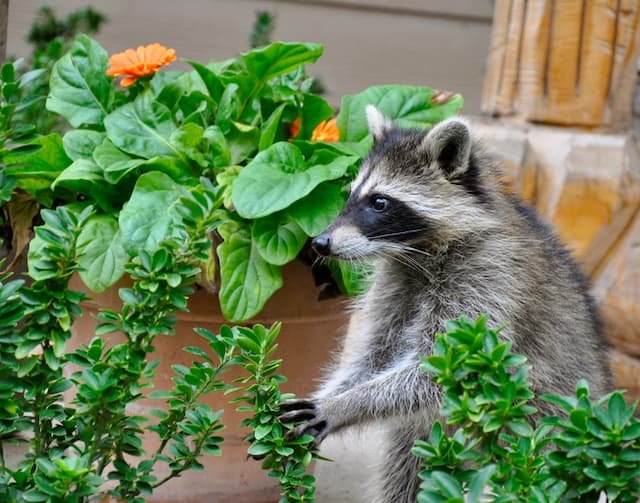
Types of Fencing
- Wire mesh or hardware cloth: Use 1-inch or smaller mesh to prevent raccoons from squeezing through.
- Electric fencing: Low-voltage electric fences can deter raccoons effectively.
- Vertical fences: Raccoons can climb, so fences should be at least 4 feet tall with overhangs or angled tops.
- Buried fencing: Raccoons may dig under fences; bury the bottom 6-12 inches underground.
Tips
- Reinforce gates and latches; raccoons can open loose or weak gates.
- Use fencing around high-value crops like corn, melons, and squash.
- Combine fencing with other deterrents for maximum protection.
Physical barriers prevent raccoons from accessing crops while minimizing interaction and harm.
Method 2: Remove Food Attractants
Raccoons are drawn to gardens by accessible food sources. Reducing availability can discourage repeated visits.
Strategies
- Harvest promptly: Pick fruits and vegetables as soon as they ripen.
- Clean up fallen produce: Fallen crops attract nocturnal feeders.
- Secure compost bins: Use raccoon-proof bins with tight-fitting lids.
- Store pet food indoors: Avoid leaving pet food outside overnight.
By eliminating easy meals, gardeners make their plots less attractive, encouraging raccoons to move elsewhere.
Method 3: Motion-Activated Deterrents
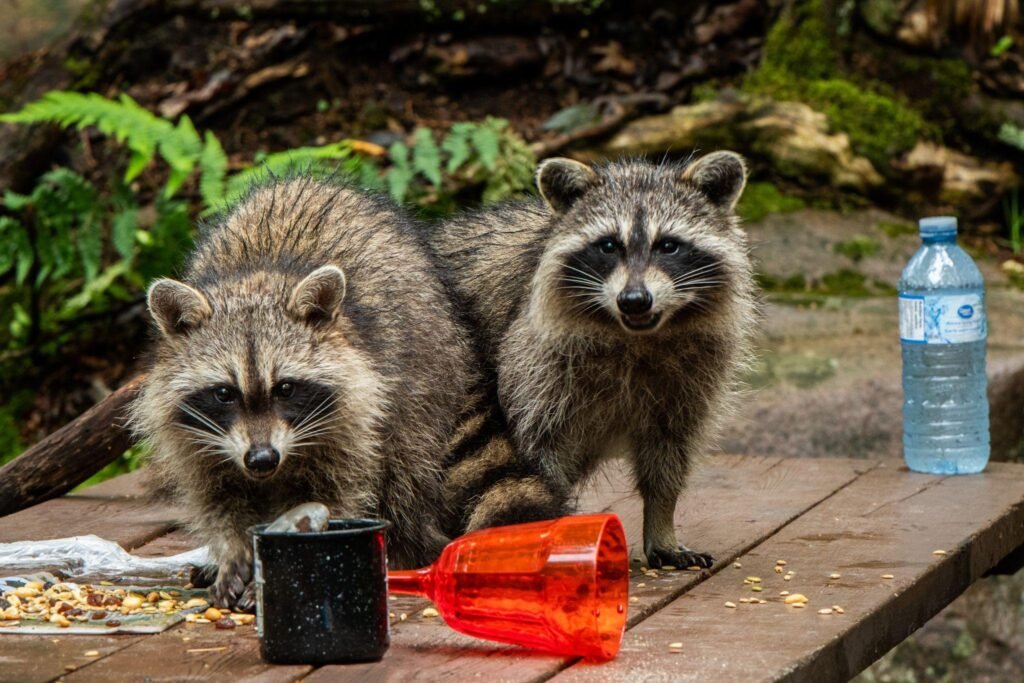
Raccoons are cautious and will often avoid sudden movements, lights, or water.
Types of Deterrents
- Motion-activated sprinklers: Sudden water sprays startle raccoons and prevent nighttime visits.
- Motion lights: Bright lights or flashing LED lights can deter raccoons from entering.
- Ultrasonic devices: Emit high-frequency sounds inaudible to humans but disturbing to raccoons.
Tips
- Place devices near entrances, gates, and high-value crop areas.
- Combine motion deterrents with fencing for enhanced protection.
- Vary the positioning occasionally to prevent raccoons from becoming accustomed.
Motion-activated systems are humane, eco-friendly, and effective at discouraging nocturnal activity.
Method 4: Use Natural Repellents
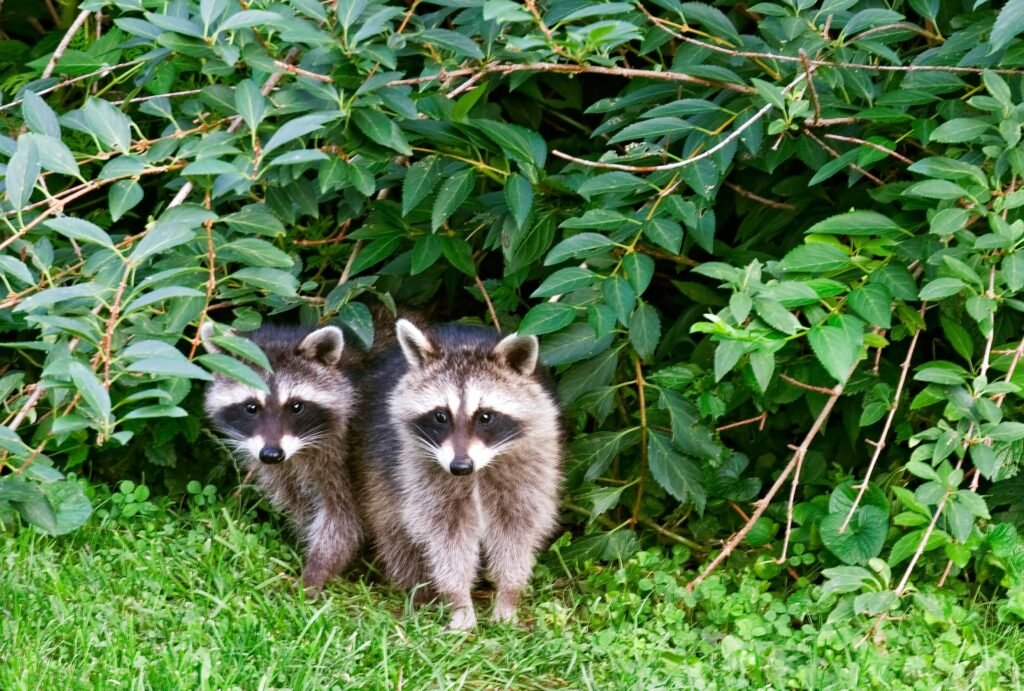
Certain natural scents and substances can discourage raccoons from frequenting your garden.
Recommended Repellents
- Ammonia-soaked rags: Place in areas where raccoons enter; the strong odor is unpleasant.
- Predator scents: Commercially available coyote or fox urine can simulate danger.
- Garlic, hot pepper, or vinegar sprays: Apply to crops or soil around plants to deter feeding.
Tips
- Reapply after rain or irrigation.
- Use repellents as part of an integrated strategy, not as a sole solution.
- Avoid direct contact with edible produce to prevent taste alteration.
Natural repellents provide a non-toxic way to discourage raccoons without harming plants or wildlife.
Method 5: Plant Raccoon-Resistant Crops
Some crops are less appealing to raccoons due to taste, texture, or smell. Including these in your garden can reduce overall damage.
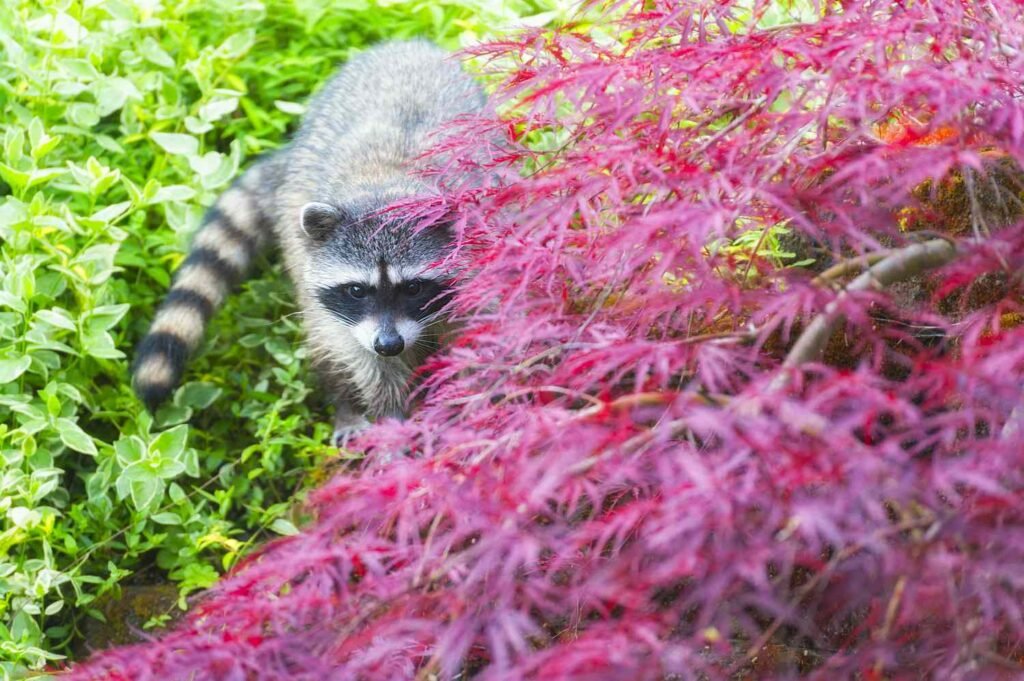
Examples
- Onions and garlic
- Hot peppers and chili varieties
- Strongly aromatic herbs like rosemary and sage
- Leafy greens like kale and collards (less attractive than fruits or melons)
Tips
- Use raccoon-resistant crops as border plants around more vulnerable crops.
- Combine with fencing and deterrents to protect high-value produce.
Choosing less attractive plants can act as a natural barrier to raccoon feeding while allowing some crops to thrive.
Method 6: Encourage Natural Predators
Raccoons are part of the ecosystem, and their presence is usually balanced by predators. Encouraging these predators can help deter raccoons naturally.
Examples of Natural Predators
- Owls and hawks: Encourage by installing nesting boxes or perches.
- Coyotes or foxes: Presence in surrounding areas can reduce raccoon activity.
- Domestic dogs: Supervised outdoor time can act as a deterrent.
Tips
- Avoid feeding predators directly; this can create dependency.
- Maintain natural vegetation to support predator habitats.
- Combine predator encouragement with garden protection methods for optimal results.
Predators help maintain ecological balance, indirectly protecting crops without human intervention.
Method 7: Human Activity and Vigilance
Raccoons avoid areas with regular human presence. Incorporating daily vigilance into garden routines can reduce encounters.
Active Management
- Walk through the garden in the evening to scare away nocturnal visitors.
- Make noise with claps, whistles, or metal pans to startle raccoons.
- Remove hiding spots like tall weeds, wood piles, or dense brush near gardens.
Benefits
- Reduces habituation, keeping raccoons wary of your property.
- Complements fencing, repellents, and deterrent devices.
- Provides early detection of raccoon activity, allowing quick response.
Active presence is a simple, cost-free way to protect crops alongside other strategies.
Common Mistakes to Avoid
- Leaving gaps in fencing: Even small openings invite raccoons.
- Ignoring fallen or ripe produce: Attracts repeated visits.
- Using only one deterrent method: Raccoons are intelligent and can adapt.
- Feeding wildlife inadvertently: Bird feeders or pet food left out encourage raccoons.
- Underestimating climbing ability: Raccoons can scale trees, fences, and trellises easily.
Avoiding these mistakes ensures a comprehensive and effective raccoon management plan.
Benefits of Humane Raccoon Control
- Protects crops without harming animals.
- Maintains ecological balance by allowing raccoons to continue their natural role in the environment.
- Reduces reliance on chemicals, promoting safer soil and produce.
- Cost-effective: Many methods, such as fencing and motion-activated devices, are one-time investments.
- Educational opportunities: Observing raccoons’ behavior teaches patience, adaptability, and respect for wildlife.
Humane control fosters coexistence, allowing gardeners to protect crops while preserving biodiversity and ethical practices.
Conclusion
Raccoons are intelligent, opportunistic creatures that can cause significant crop damage if not managed effectively. However, humane, non-lethal strategies can protect gardens while maintaining ecological balance.
Key strategies include:
- Secure fencing with overhangs, buried barriers, and strong gates.
- Remove food attractants, including fallen produce and pet food.
- Use motion-activated deterrents such as sprinklers, lights, or ultrasonic devices.
- Apply natural repellents like ammonia, predator scents, or hot pepper sprays.
- Plant raccoon-resistant crops and use companion planting strategies.
- Encourage natural predators to reduce raccoon activity indirectly.
- Maintain active vigilance through regular garden checks and noise deterrents.
By integrating these strategies, gardeners can reduce crop loss, protect valuable plants, and coexist with wildlife. Humane raccoon management is a practical, sustainable approach that ensures productive, thriving gardens while respecting the natural role of raccoons in the ecosystem.
